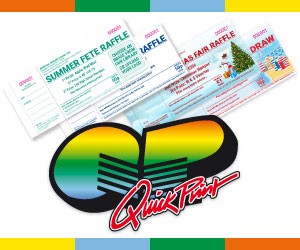While you’re busy planning and booking your summer fair, don’t forget that more visitors means bigger profits. The key to attracting as many guests as possible is good communication, so decide who you’d like to target and make sure they have all the information they need.
Who’s coming to your fair?
If you hold a fair every year, you already have an engaged audience, typically made up of school parents. But have you considered who else might be persuaded to come? Consider the demographic of your local area (as well as visitors to the area) and make a shortlist of groups to contact. Demonstrate that you can offer something for everyone: parents will enjoy watching their children and knowing they are supporting the school; children want sweets, face-painting, a bouncy castle and their friends; older members of the community may appreciate tea and cake served outdoors. Do you have tourists in your town who might bring their children? Would grandparents come if there was something especially for them? Could you send a special invitation to the families who’ll be joining in September? Once you’ve decided who to communicate with, promote your event to them consistently and in a variety of ways.
Pass it on
Word of mouth: A personal recommendation is one of the most powerful persuasion tools available. Start with your closest supporters and PTA members, and make sure they know the date of the fair and about any main attractions you’ve booked. Then encourage them to tell their friends and family and to share any posts about the fair on their social media channels. If all your committee members and regular supporters were to do this, just think how many people you could reach.
School emails and newsletters: Put fair details into school and PTA newsletters. Ask parents if they can include it in a company newsletter or intranet site at their place of work.
Assemblies: Ask your headteacher to make regular announcements in school assemblies. This is a great way to get children on board.
Get online
Facebook: If your PTA or school has a Facebook presence, create posts from ‘Save the date’ right through to ‘How much we raised’. You can also make a Facebook event. Look beyond your own page: are there other local groups in which you could post? Many schools and PTAs have Twitter or Instagram accounts too, so use them to promote your fair.
School website: Make sure your fair is visible on your school website. If potential visitors are looking for information, that’s where they are likely to head.
Read all about it
Posters: A poster is a tried-and-tested way to promote your fair. If you’re lucky enough to have a committee member or parent who’s a graphic designer, ask them to create a poster that’s colourful and eye-catching and can be read at a distance. Otherwise, try online tools such as postermywall.com or canva.com. Keep the design simple – people will only see it for a short time so the important details need to stand out. It’s worth printing posters at A3 if you can.
Put your poster on the school noticeboard and ask local shops if they’d be happy to display a poster in their window. If they don’t want it in the window, will they agree to put it up in their staff room? Offer to collect your posters afterwards. Don’t forget libraries, preschools, office noticeboards, cafes, cinemas, supermarkets and tourist offices. Check with your local council before putting posters on public property, and remember to take your poster down after the event.
Flyers: Flyers are another excellent way to communicate information visually. It might be small, but you can actually get a lot of information onto a flyer – just make sure the main message is clear. Send flyers home in pupils’ book bags and ask if you can leave a pile in any of the places you have posters.
Estate agent boards: Ask local estate agents if they will print and put up boards for your fair. Make sure the board includes the date, time and location. Parents and local community members commit to having a board outside their house for an agreed amount of time, and the estate agency pays the school an agreed amount of money per board. Remember to thank those who agree to take a board.
Banners: If you don’t already have one, or yours needs updating, get a banner made. Make sure you measure the space in which it will hang, and don’t rely on the old banner for measurements as items such as fences and plants may have changed over the years. Signage companies will design your banner for you for a small charge, but if you’re doing it yourself, remember to leave a big border around the edge for the eyelets. Choose generic wording, such as ‘summer fair this Saturday’ so the banner can be used every year. Seek permission from your local authority at least a month before putting up any banners.
- Find local signage companies on your county PTA+ Facebook group.
Good publicity
Community newsletters: Are there any newsletters in your area? Find out who the editor is and contact them to ask if they can include a few lines about your fair. You could also ask local arts organisations and other businesses that work in the community. With any outside publication, contact them well ahead of time, ask for their deadlines and get your listing in on time.
Local council: Does the council print a local magazine or newsletter? If they will give you a listing and the publication is sent to every household in the area, that’s a lot of coverage.
Local commercial publications: Local magazines may have a free listings section or be happy to run a free advert for you. Try the parish magazine, village newsletter and any local ‘what’s on’ magazines.
Bring it on!
You’ve chosen your target audiences and how best to communicate with them. You’ve researched deadlines and spoken with local organisations and publications. Now it’s time to draw up a promotions calendar. Find templates online, or print out a simple calendar. Be realistic about how much time you’ll have to do everything and spread the majority of your promotions across the six weeks before the event, making sure you have a big push at the end to whip up last-minute excitement. Remember to factor in thanking everyone who helped you. Getting your message out there takes careful preparation and a lot of effort, but it will make a big difference.



.gif)







